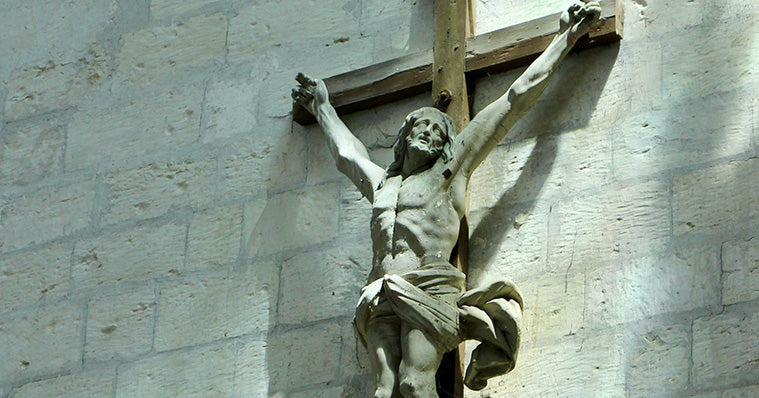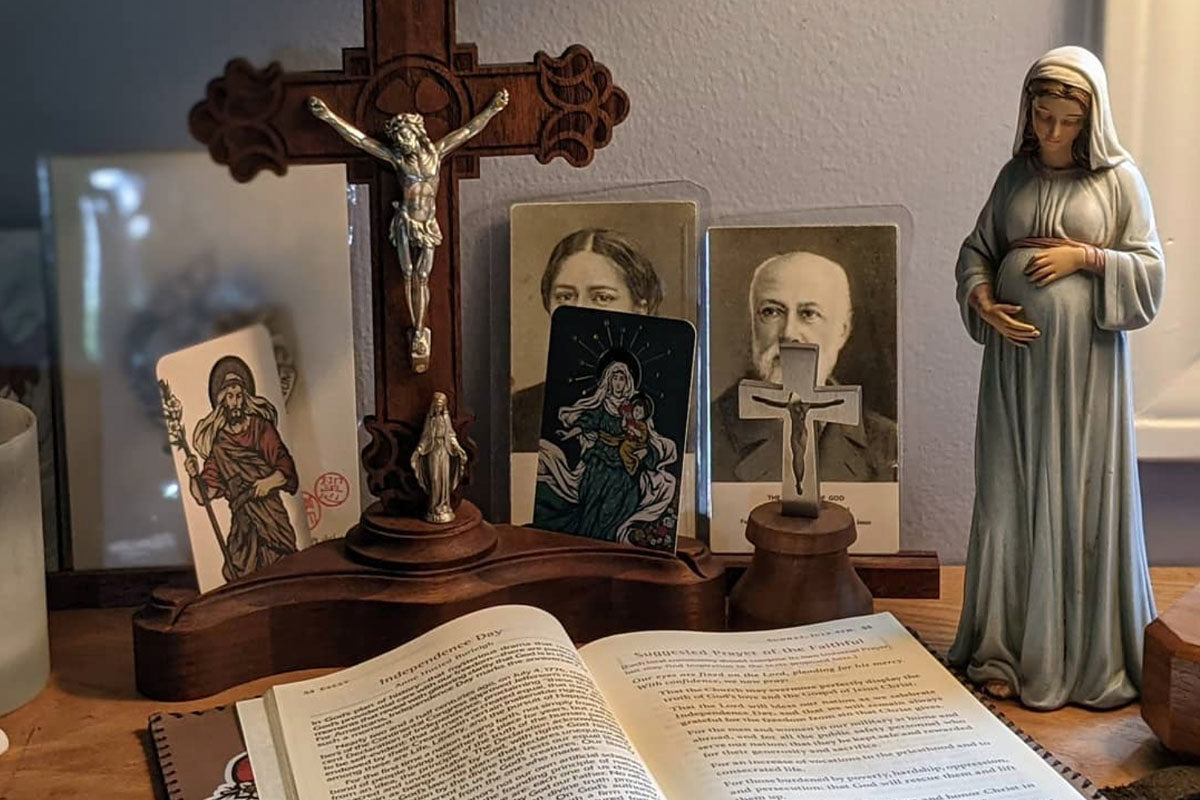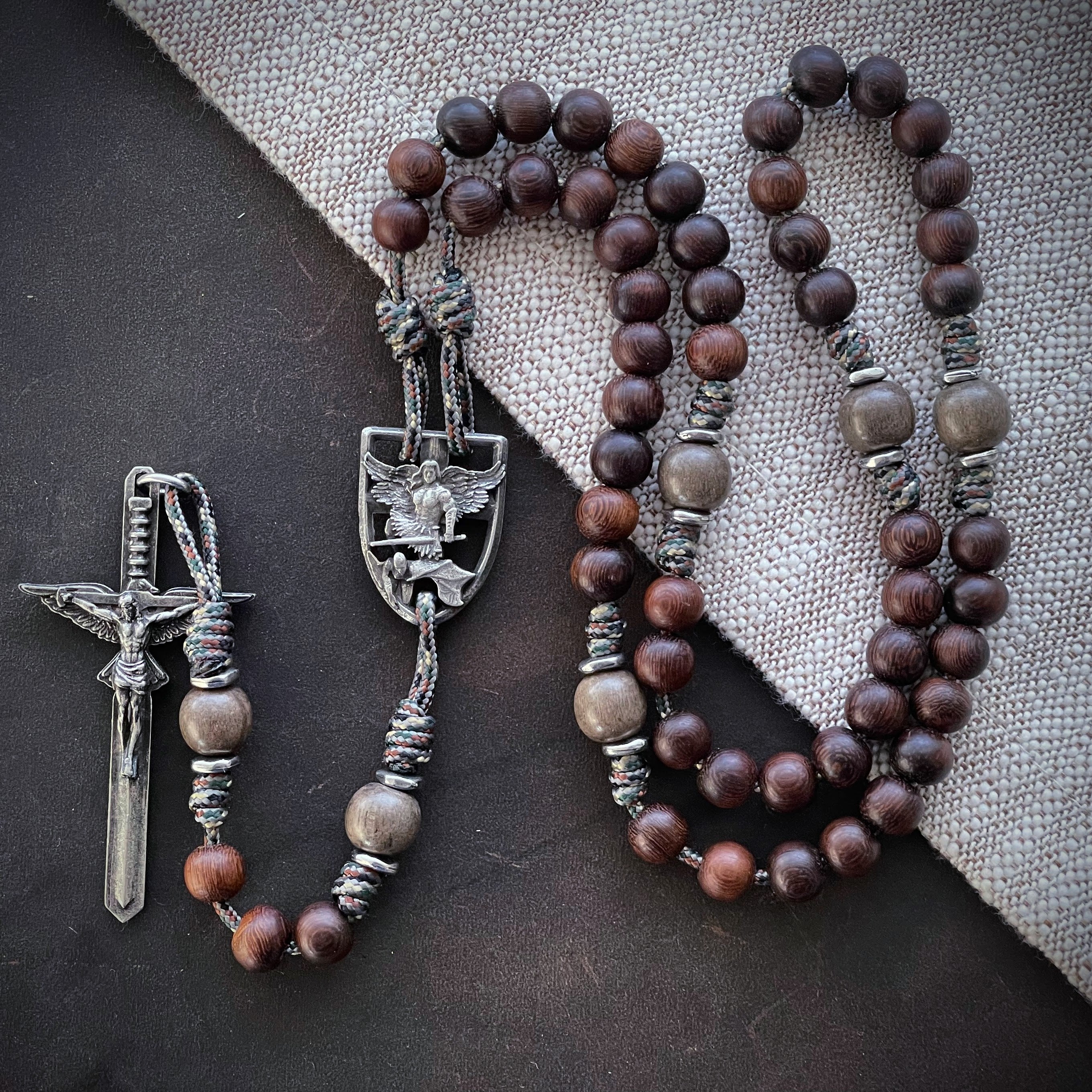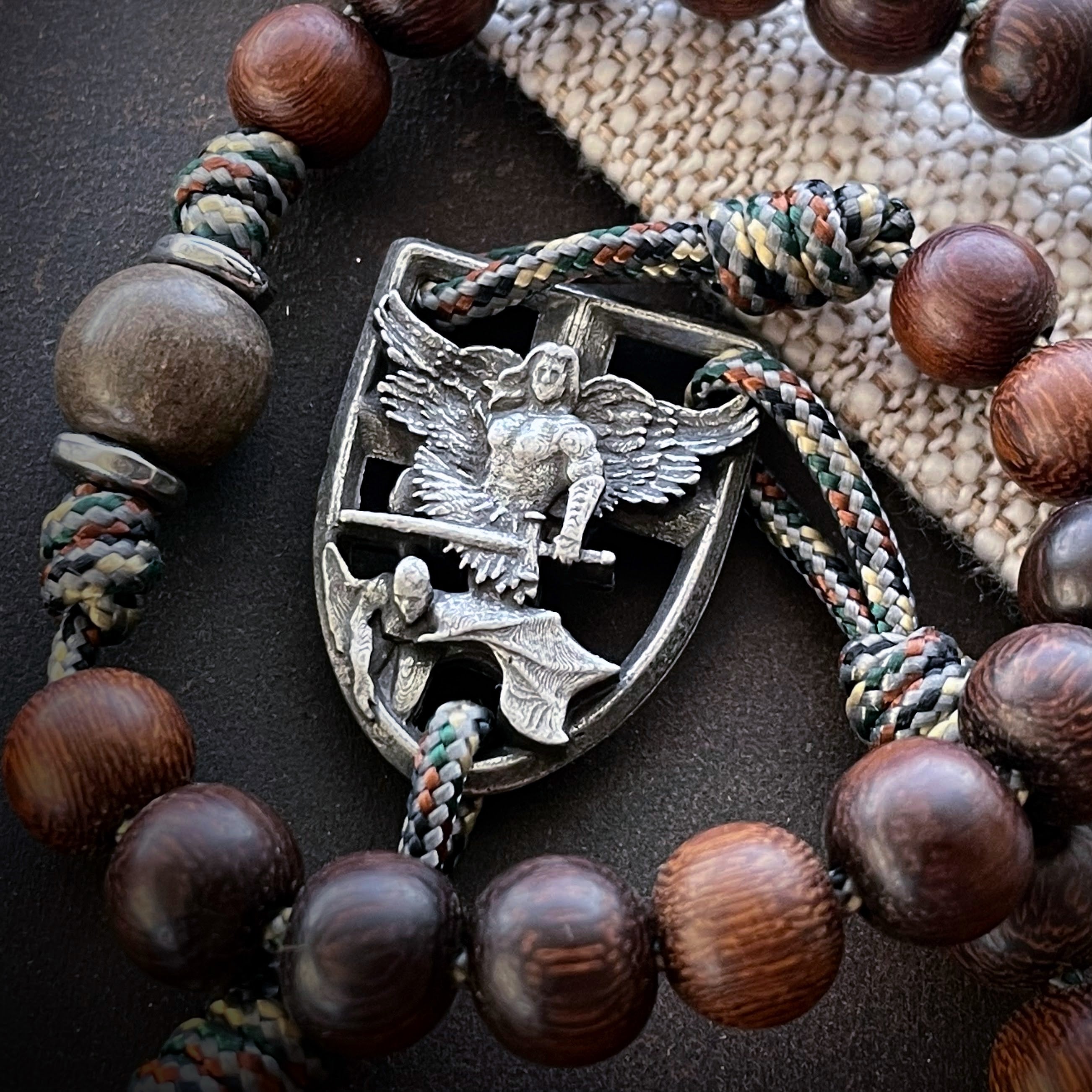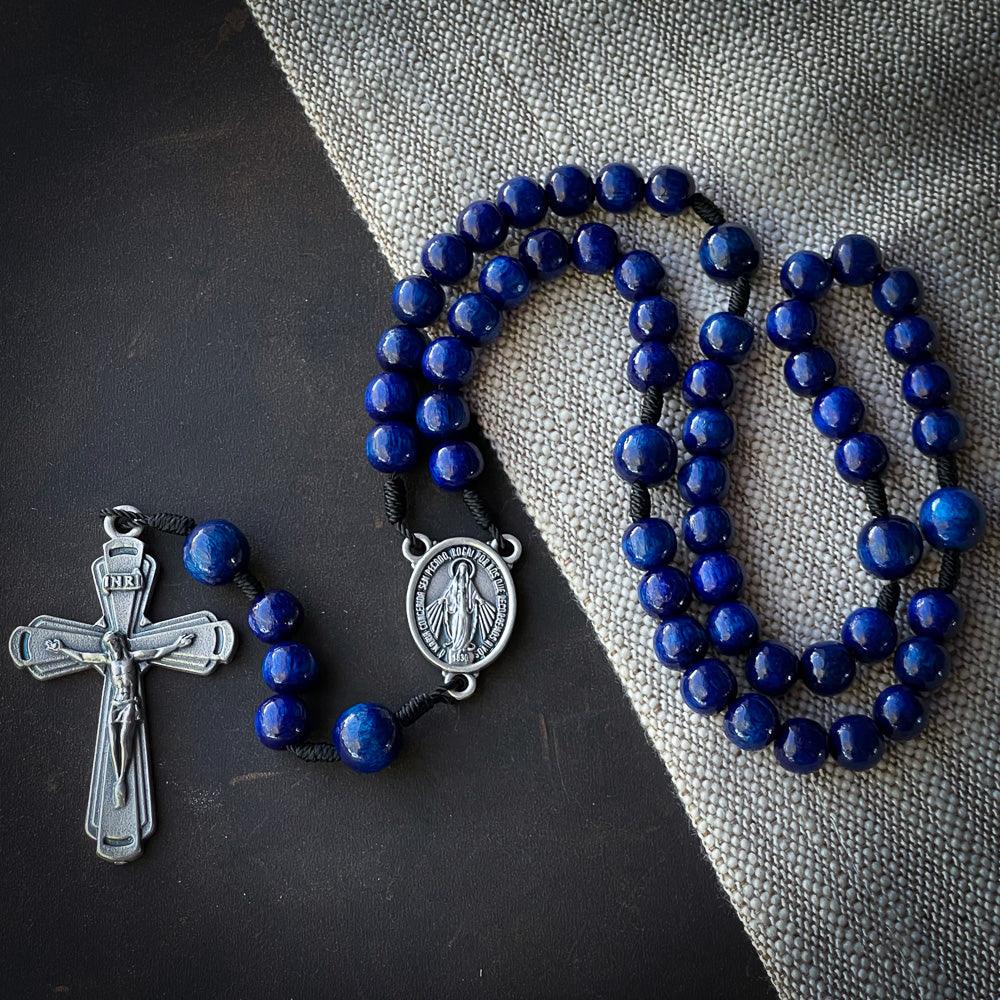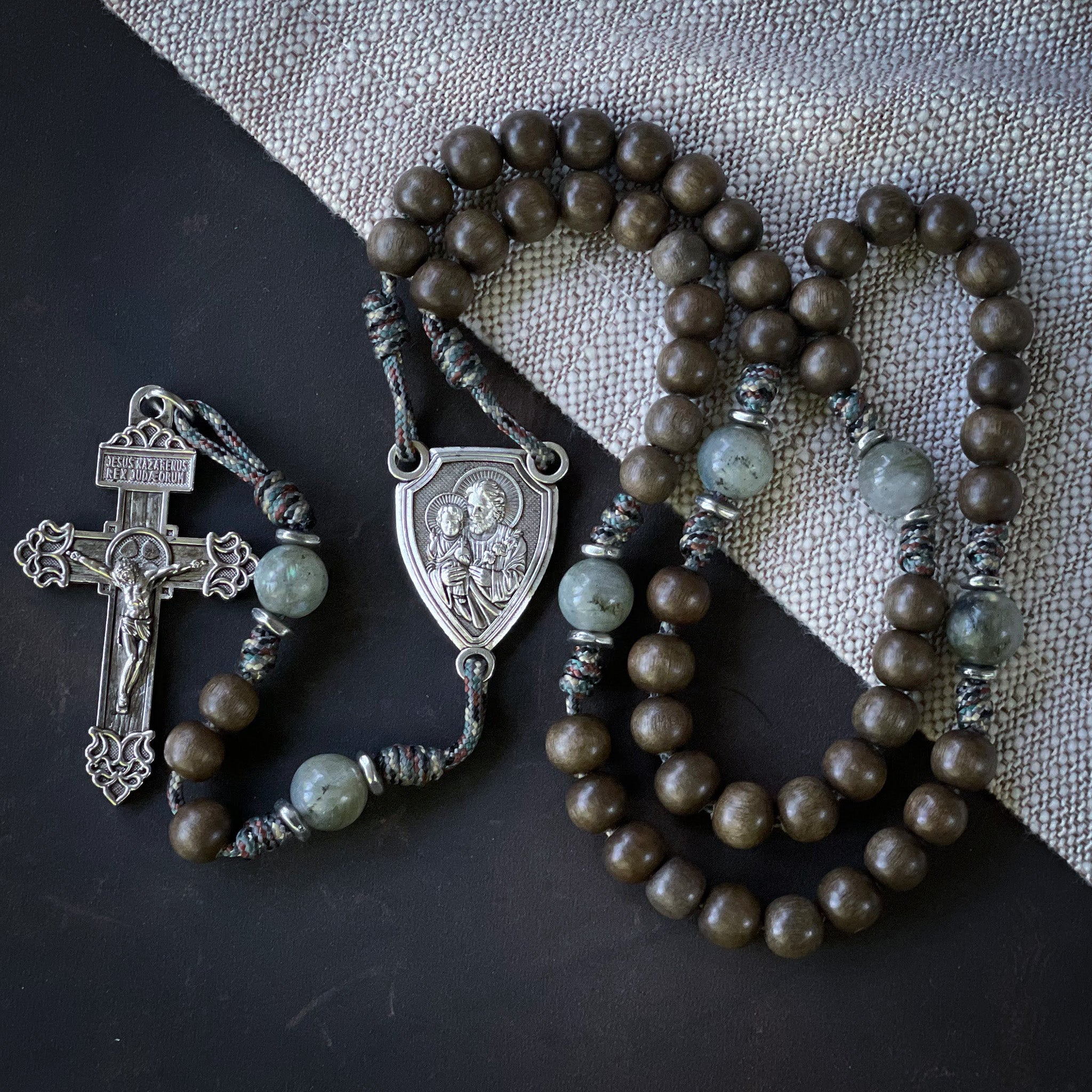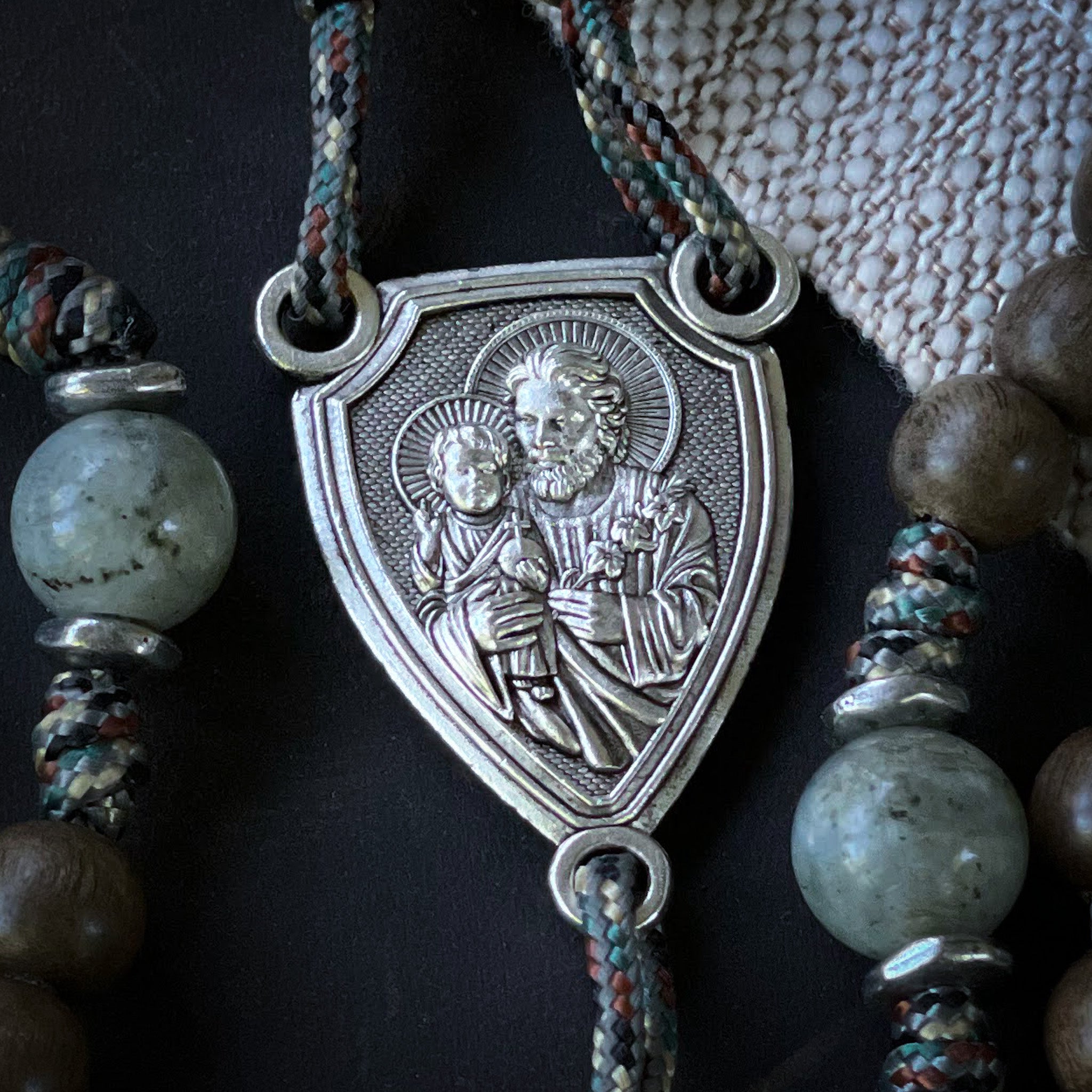
At the Catholic Woodworker, we make the products we make because humans need tangible, beautiful things that help us to direct our devotion and attention to God. So we make home altars to help you create sacred space. And we make rosaries as spiritual weapons to put you under Mary’s protection.
We also offer crucifixes. If you’re a cradle Catholic, crucifixes have been a part of your landscape since you were small. But how much do you really know about them?
You’ll find them in every Catholic church in the world. You probably saw one in your grandmother’s bedroom. You also know that Count Dracula really, really doesn’t like them. But do you know why they’re important or how to use them?
It’s time for some crucifix basics!
So, what IS a crucifix? Is that another word for “cross”?
Every square is a rectangle, but not every rectangle is a square. Similarly, every crucifix is a cross, but not every cross is a crucifix. The Latin crucifixus means “someone fixed [or attached] to a cross.” So what makes the crucifix is the corpus, or body, of Jesus suffering and dying.
Is it just a Catholic thing?
Crucifixes became standard in both Western and Eastern Christianity around the turn of the first millennium. They are not exclusive to Catholics. The Eastern Orthodox use them, too, and so do some Protestant denominations. But Catholics are unique in how much we emphasize and love the crucifix.
God’s most precious gift to us is our salvation. The Passion of Christ is how we obtained it. Our willingness as Catholics to embrace the raw, unsparing detail of the Passion sets us apart from many other Christians. As we sing in the Good Friday liturgy: “Behold the wood of the Cross, upon which is hung our salvation. O come, let us worship!”
The Cross, and the salvation hanging upon it, is at the center of Catholic culture and life. We are proud of it—and we should be!
So where do I put it?
There isn’t a hard and fast rule for where you should install a crucifix. But consider some of the purposes of a crucifix, and you’ll get some ideas.
One function of a crucifix is to proclaim your faith. It’s a way to let other people know—family, friends, visitors—that you belong to Christ and that your hope rests in the mystery of His suffering. So you might hang a crucifix in a prominent place like a living room, or near your front door.
Another function, which crosses have served in Christian homes from the earliest centuries of the Church, is to be a focal point for your personal prayer. Where do you have the time, space, and privacy to pray? Your bedroom? Your home office? An upstairs sitting room? Those are great places for a crucifix.
Finally, crucifixes traditionally provide protection from evil. And while Count Dracula is a fictional character, the devil most certainly is not. So you might place a crucifix in your child’s bedroom—or your own bedroom—as a concrete sign of your prayers to God for protection.

What prayers should I say in front of a crucifix?
A short and entirely accurate answer is: any. Consider that where we pray shapes how we pray. So if you’re praying in front of a crucifix, then whatever you are discussing with God is (hopefully) shaped by your appreciation of Jesus’ sacrifice. That’s how all prayer should be.
That said, there are special prayers associated with the crucifix, and the one below is probably the most famous. It carries indulgences under certain conditions, and is said while kneeling:
Look down upon me, good and gentle Jesus, while before Your face I humbly kneel and, with burning soul, pray and beseech You to fix deep in my heart lively sentiments of faith, hope, and charity; true contrition for my sins; and a firm purpose of amendment. While I contemplate, with great love and tender pity, Your five most precious wounds, pondering over them within me and calling to mind the words which David, Your prophet, said to You, my Jesus: “They have pierced My hands and My feet, they have numbered all My bones.” Amen.
Is it okay to wear a crucifix?
Absolutely, yes! It’s not only okay, but desirable, and for the same reasons you would display one in your home. When you wear a crucifix, you witness your faith in front of others, you invoke God’s protection against evil, and you cultivate a prayerful attitude in your daily life. In fact, wearing a crucifix on your own body might give you a deeper realization that Jesus’ death is a death for you, and His love is a love for you. And that’s good!
How do you bless a crucifix?
Good question! First, some vocabulary: a crucifix, like a medal, rosary, or holy card, is a sacramental. Sacramentals, according to the Second Vatican Council, are “objects, prayers, and actions that dispose people to receive grace.”
As Catholics, we believe it’s important to bless our sacramentals. That’s how we set them aside for God and His work in our lives. And to get them blessed, we bring those objects to someone who is himself set apart in the same way. That is, a priest.
If you need a crucifix blessed, then approach your parish priest after Mass and ask him about his availability. Or you can call the rectory, and speak to him or the parish secretary. Your priest might be able to bless your crucifix immediately, or he might make an appointment with you. For the blessing, he will use holy water and read from a ritual book that contains formulas for blessing sacramentals.
Don’t hesitate to ask him! He does this all the time!
Now I want a crucifix. How can I get one?
As we mentioned, the Catholic Woodworker has crucifixes available for purchase—some handmade by us, others sourced from skilled Italian craftsmen. Follow this link to see what we’ve got!


